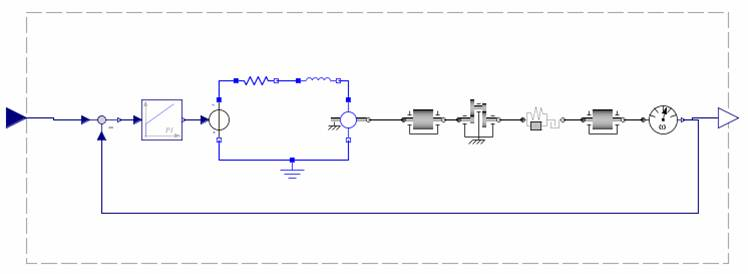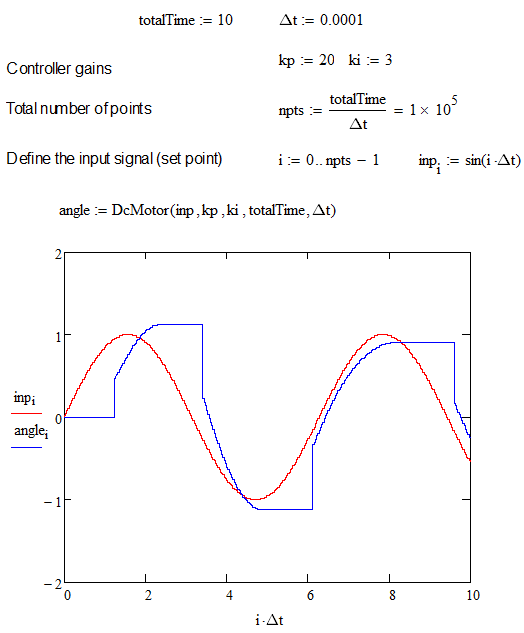Community Tip - If community subscription notifications are filling up your inbox you can set up a daily digest and get all your notifications in a single email. X
- Subscribe to RSS Feed
- Mark Topic as New
- Mark Topic as Read
- Float this Topic for Current User
- Bookmark
- Subscribe
- Mute
- Printer Friendly Page
Converting physical component models to Mathcad functions
- Mark as New
- Bookmark
- Subscribe
- Mute
- Subscribe to RSS Feed
- Permalink
- Notify Moderator
Converting physical component models to Mathcad functions
We've been exploring a route to convert physical component models like this...

to Mathcad functions like this...

The process works through code generation of the physical component models, and compilation into Mathcad functions. Users create physical component models with electrical, magnentic, mechanical, mutlibody and hydraulic blocks.
Is this method of producing complex Mathcad models appealing? What kind of use cases can you think of?
Samir
- Labels:
-
Mechanical_Engineering
- Mark as New
- Bookmark
- Subscribe
- Mute
- Subscribe to RSS Feed
- Permalink
- Notify Moderator
Samir
Presumably these are Maplesim models you are turning into Mathcad functions. I guess they might be of some use to those who only have Mathcad available. My only reservation is that, in my experience, when one tries to use fairly complicated components (as opposed to elementary components) obtained commercially, off-the-shelf, they never seem to have the exact functionality one wants. There is always some tweaking needed! Presumably your functions would be dll-based, so that the Mathcad users wouldn't be able to produce any required modifications themselves.
Alan
- Mark as New
- Bookmark
- Subscribe
- Mute
- Subscribe to RSS Feed
- Permalink
- Notify Moderator
Alan,
Yes, these are MapleSim models (or more generally, any Modelica program) we're turning into Mathcad functions. We've translated models as simple as RLC circuits to models as complex as electromagnetic solenoids and vehicle dynamic simulations from MapleSim to Mathcad.
The code is numerically efficient, and the solvers can handle differential algebraic equations. The functions are implemented as DLLs, so end-users need MapleSim for modifications.
The code generation from MapleSim is point-and-click, but the compilation into DLLs requires copying/pasting into a Visual Studio project and some manual (but well-understood) tweaking.
It's an interesting method of working, and one that's new to Mathcad users. I wanted to establish the potential applications, and the use-cases once your functions are in Mathcad.
- Parameter sweeps and optimziation?
- Documentation?
- Distribution to a larger audience?
Samir
- Mark as New
- Bookmark
- Subscribe
- Mute
- Subscribe to RSS Feed
- Permalink
- Notify Moderator
Has anything become of this? I'd love to see this type of functionality.
Jim





